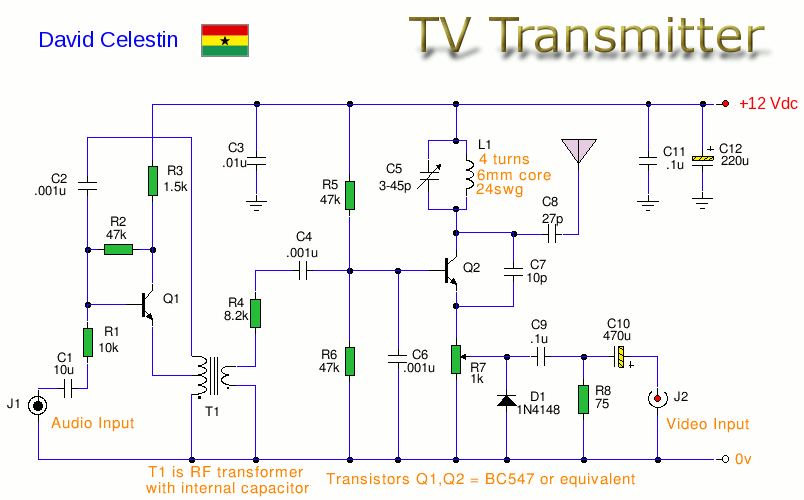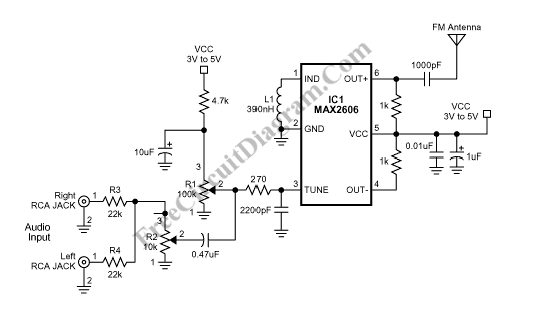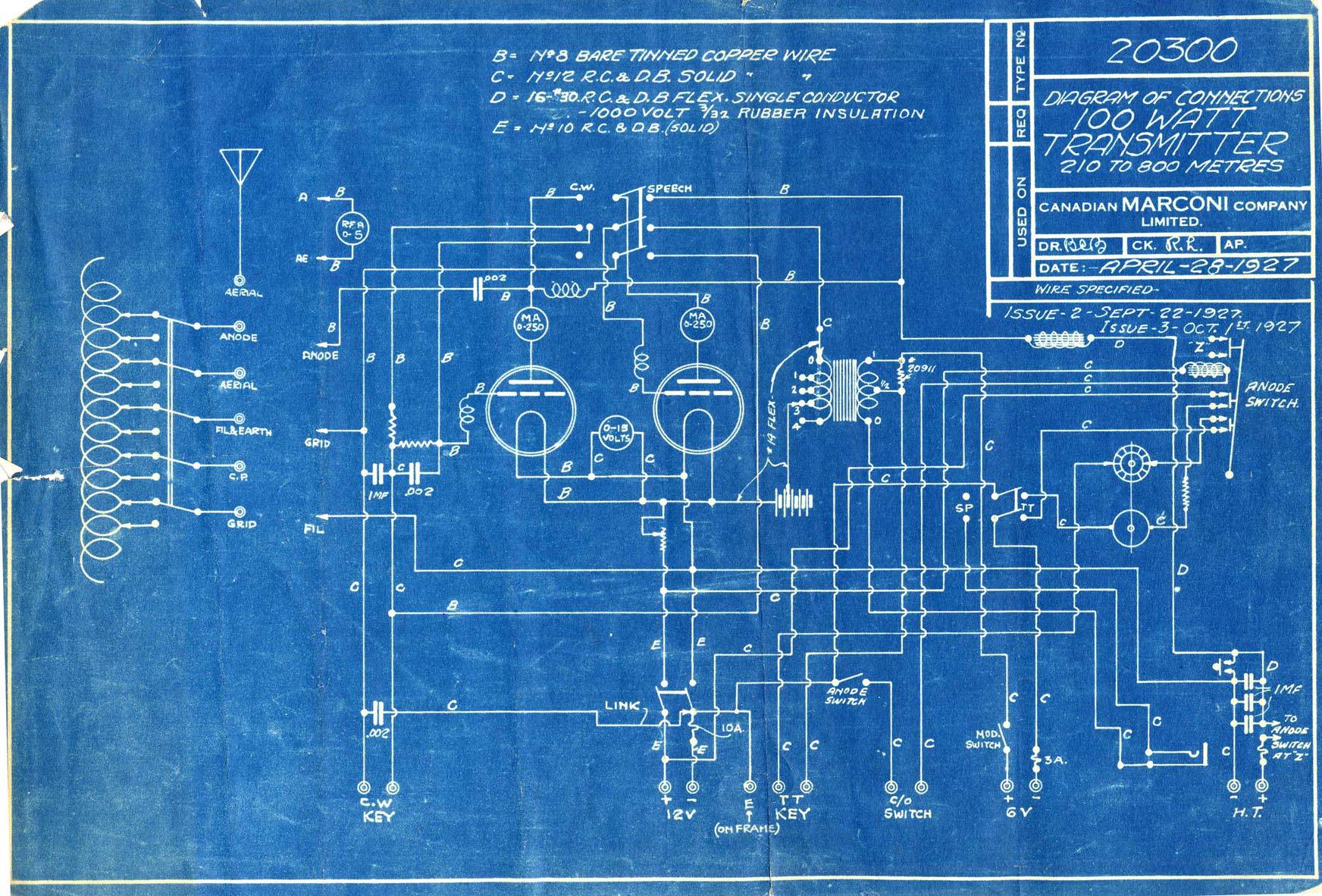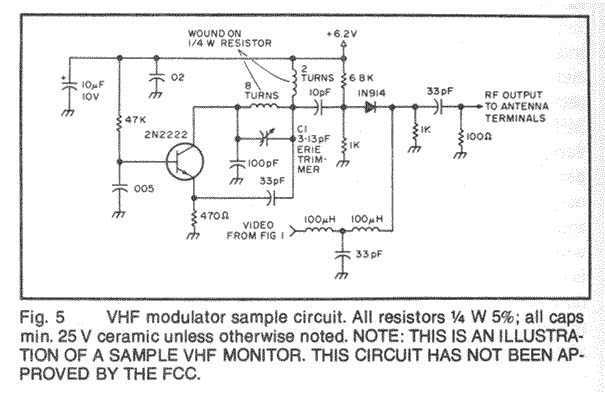
15w 12 km range fm transmitter by

This is a well-designed basic FM transmitter that allows the reception of transmitted signals within a range of 1-2 km using a standard FM receiver. Additionally, the circuit features a coil mounted on the printed circuit board. The amplitude of the input sound can be adjusted using the P1 potentiometer.
The FM transmitter circuit typically consists of several key components, including an oscillator, modulator, and amplifier. The oscillator generates a carrier frequency, which is modulated by the audio input signal. In this circuit, the audio signal is fed into the modulator, where it alters the frequency of the carrier wave according to the amplitude of the input sound.
The coil, or inductor, plays a crucial role in determining the operating frequency of the transmitter. By placing the coil directly on the printed circuit board (PCB), the design enhances stability and reduces interference, allowing for more reliable signal transmission. The PCB layout is essential for minimizing parasitic capacitances and inductances that could affect performance.
The P1 potentiometer serves as a variable resistor, enabling the user to adjust the amplitude of the audio signal before it enters the modulator. This feature allows for fine-tuning of the output signal strength, ensuring optimal transmission quality and preventing distortion.
Power supply considerations are also vital in the design of the FM transmitter. A stable voltage source is required to ensure consistent operation of the oscillator and amplifier stages. Additionally, bypass capacitors may be employed to filter out noise from the power supply, further enhancing the performance of the transmitter.
Overall, this basic FM transmitter circuit is an effective solution for short-range audio transmission, suitable for various applications such as personal broadcasting, educational projects, or hobbyist experiments. Proper attention to component selection, PCB layout, and power supply design will contribute to the successful implementation of this circuit.This is a well designed basic FM transmitter that you can easily recive the signals transmitted from this transmitter in a 1-2km range with using a normal FM reciever. Another property of this circuit is that the bobin is placed on the printed circuit board. The input sound`s amplitude can be adjusted by using the P1 potentiometer. 🔗 External reference
The FM transmitter circuit typically consists of several key components, including an oscillator, modulator, and amplifier. The oscillator generates a carrier frequency, which is modulated by the audio input signal. In this circuit, the audio signal is fed into the modulator, where it alters the frequency of the carrier wave according to the amplitude of the input sound.
The coil, or inductor, plays a crucial role in determining the operating frequency of the transmitter. By placing the coil directly on the printed circuit board (PCB), the design enhances stability and reduces interference, allowing for more reliable signal transmission. The PCB layout is essential for minimizing parasitic capacitances and inductances that could affect performance.
The P1 potentiometer serves as a variable resistor, enabling the user to adjust the amplitude of the audio signal before it enters the modulator. This feature allows for fine-tuning of the output signal strength, ensuring optimal transmission quality and preventing distortion.
Power supply considerations are also vital in the design of the FM transmitter. A stable voltage source is required to ensure consistent operation of the oscillator and amplifier stages. Additionally, bypass capacitors may be employed to filter out noise from the power supply, further enhancing the performance of the transmitter.
Overall, this basic FM transmitter circuit is an effective solution for short-range audio transmission, suitable for various applications such as personal broadcasting, educational projects, or hobbyist experiments. Proper attention to component selection, PCB layout, and power supply design will contribute to the successful implementation of this circuit.This is a well designed basic FM transmitter that you can easily recive the signals transmitted from this transmitter in a 1-2km range with using a normal FM reciever. Another property of this circuit is that the bobin is placed on the printed circuit board. The input sound`s amplitude can be adjusted by using the P1 potentiometer. 🔗 External reference





